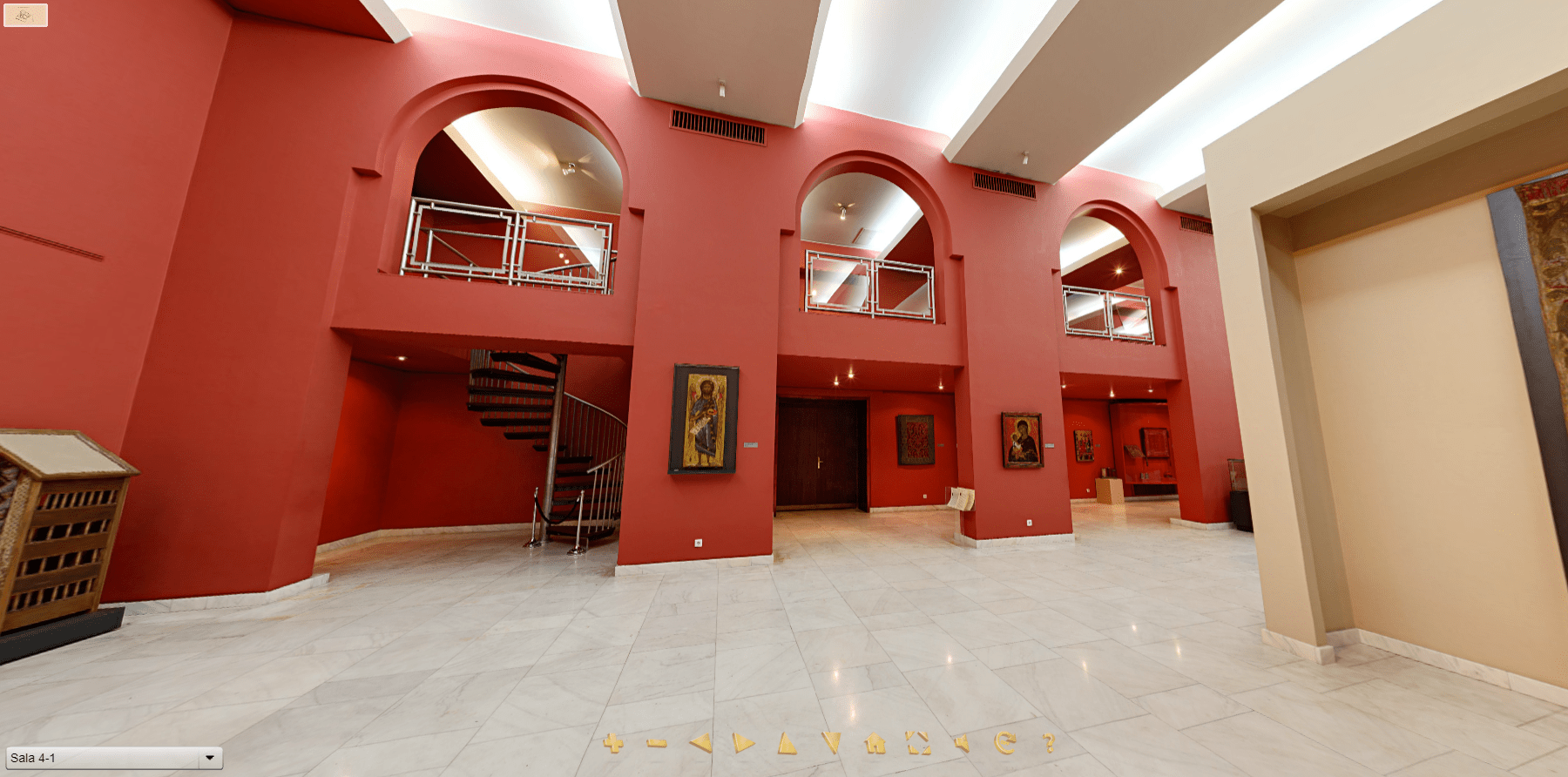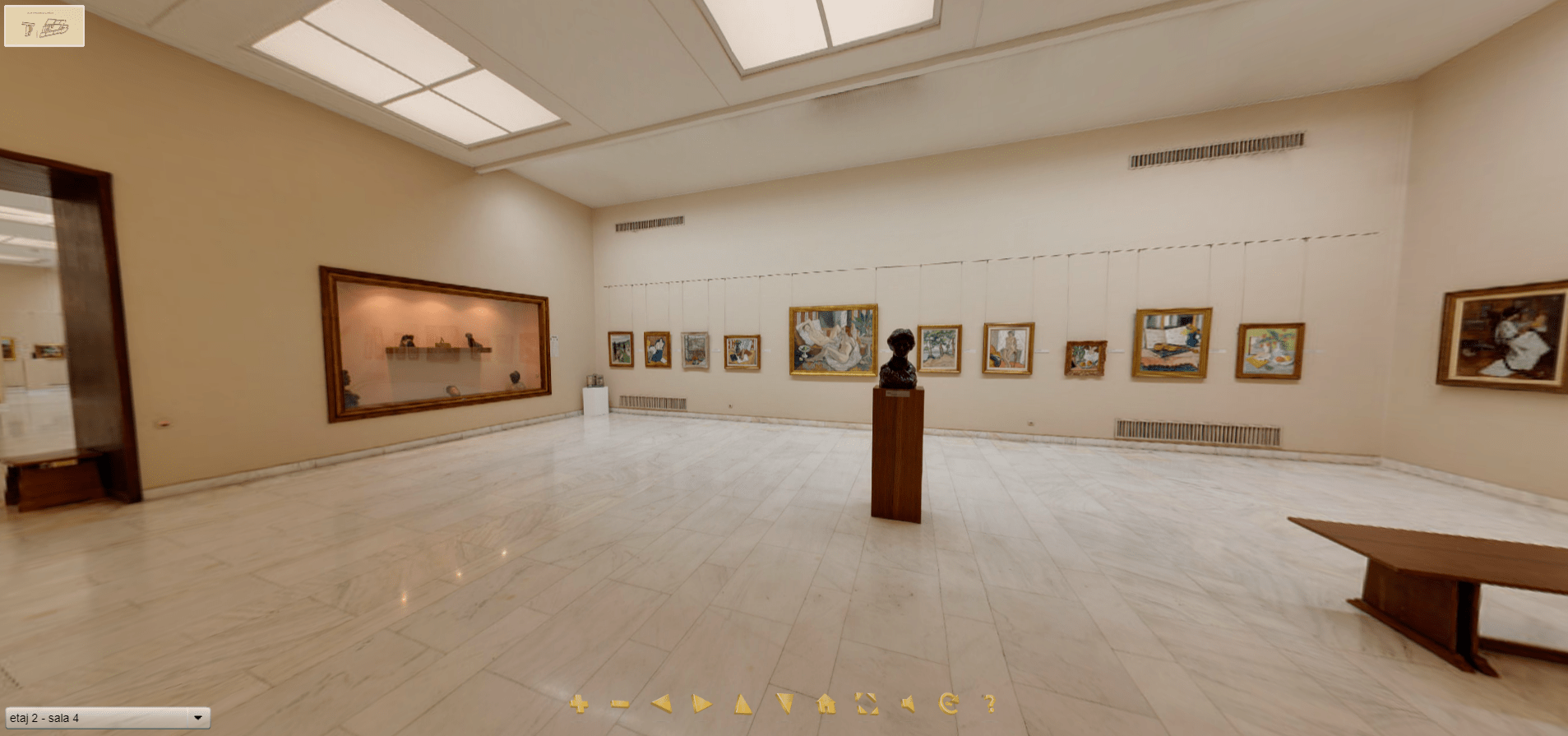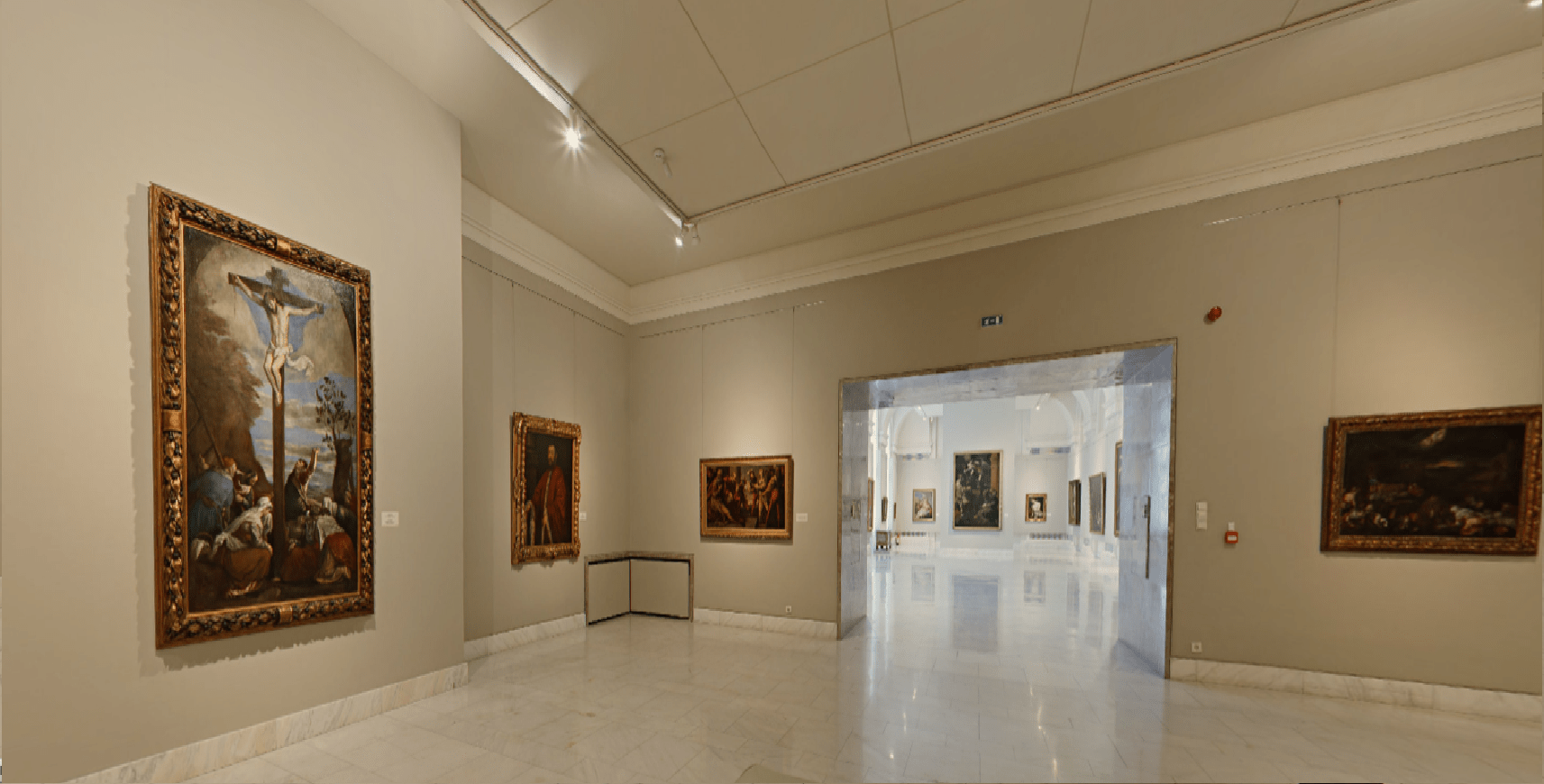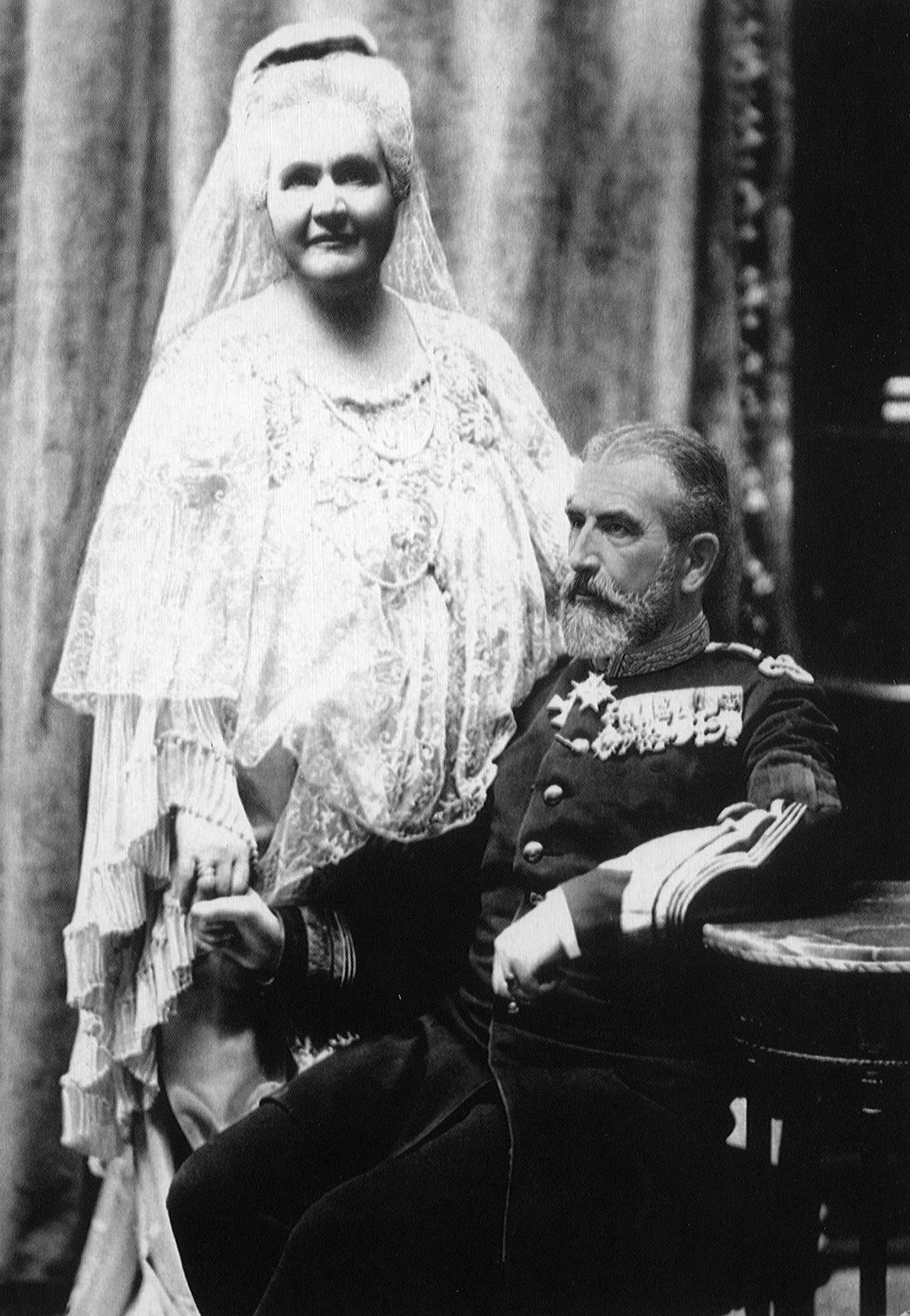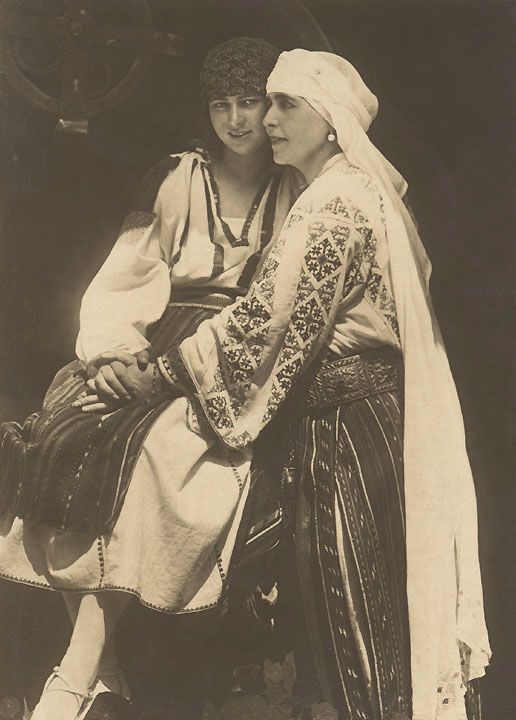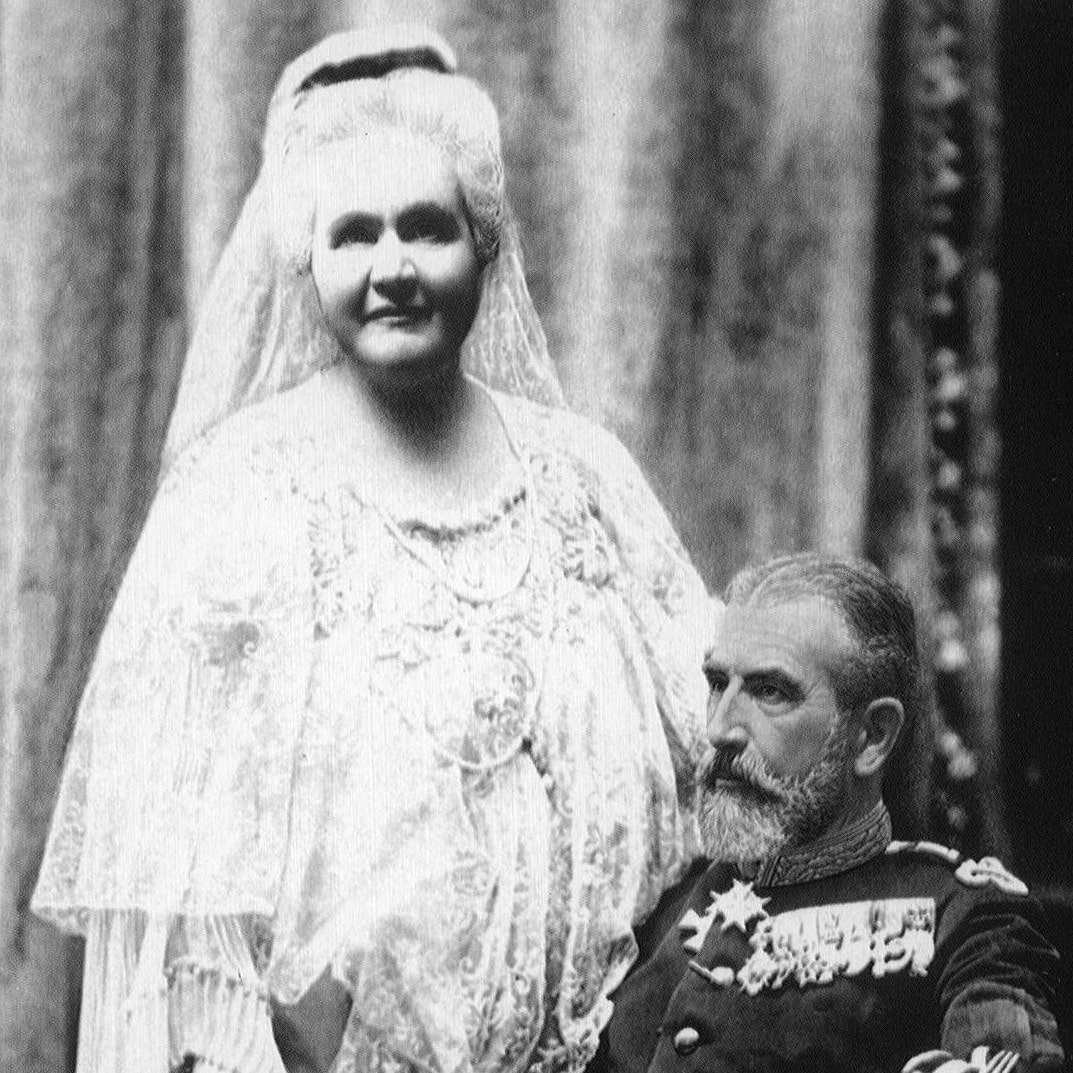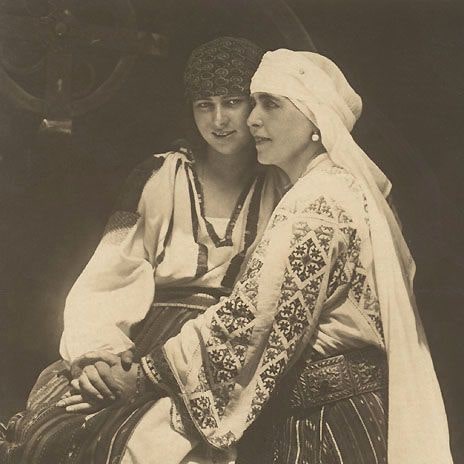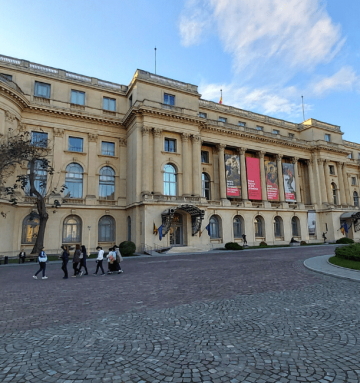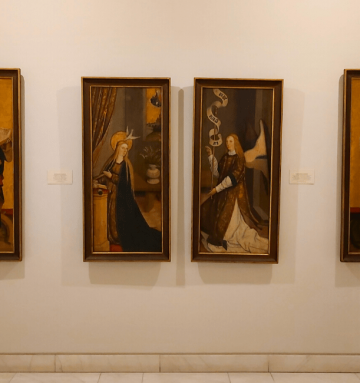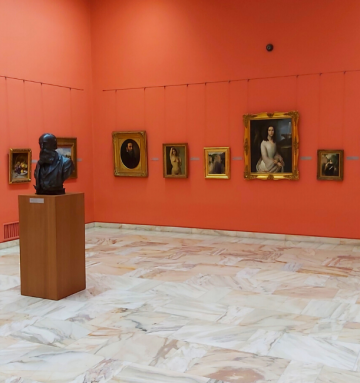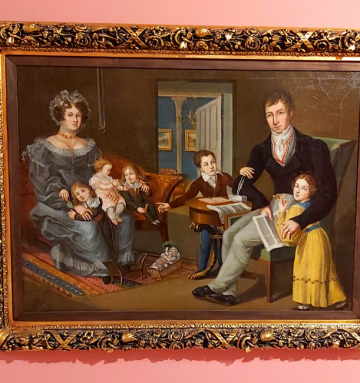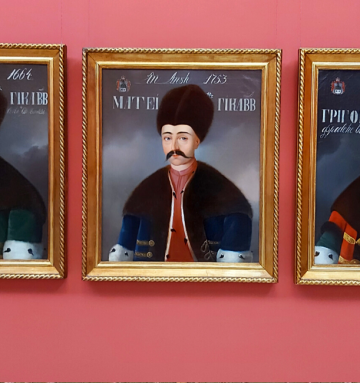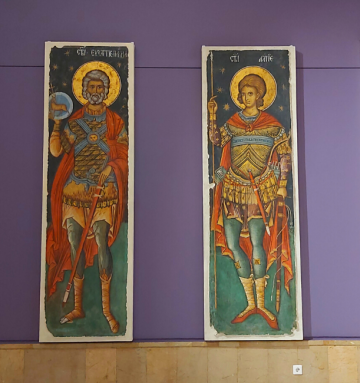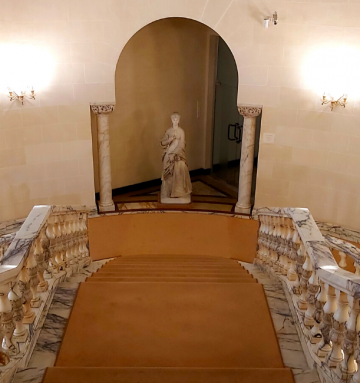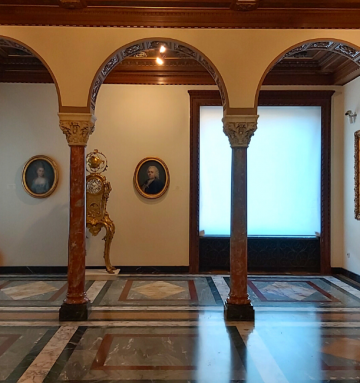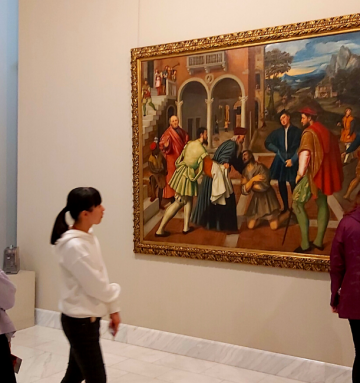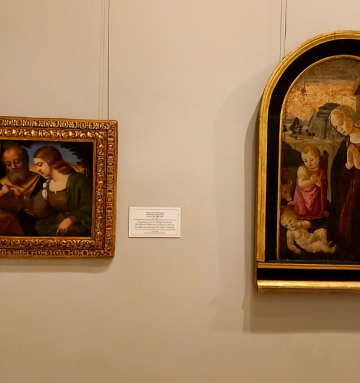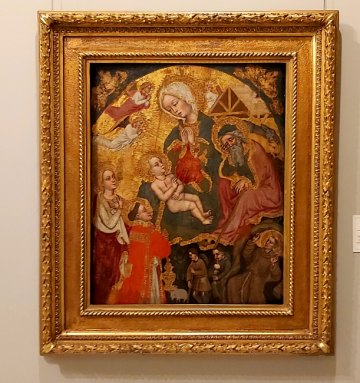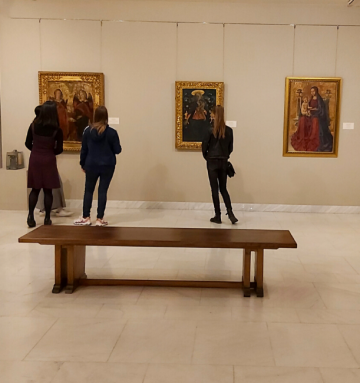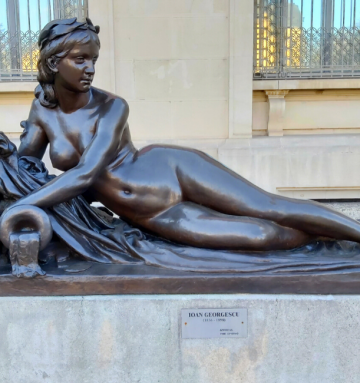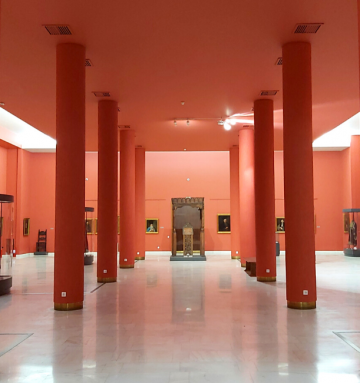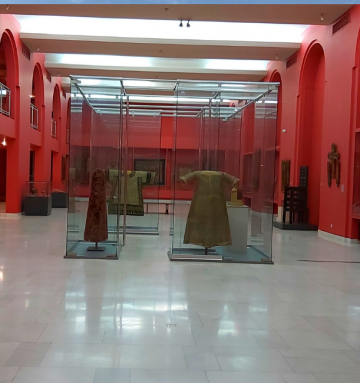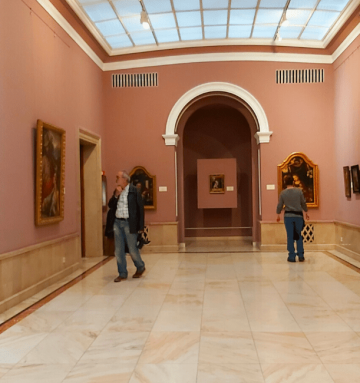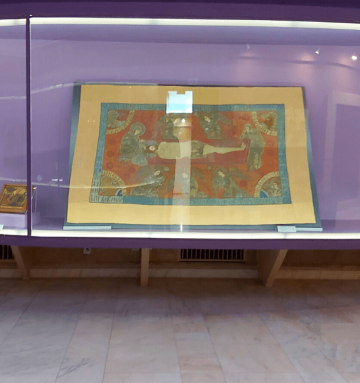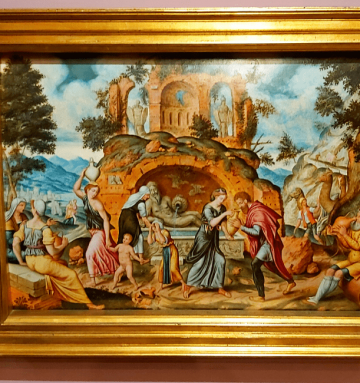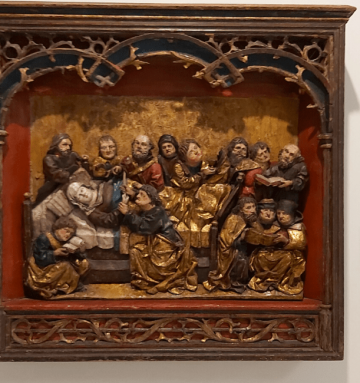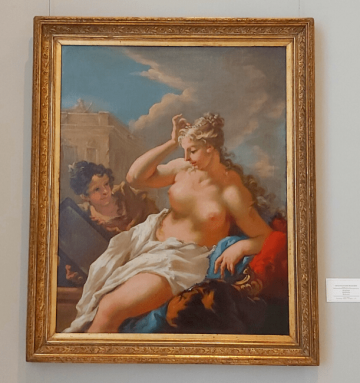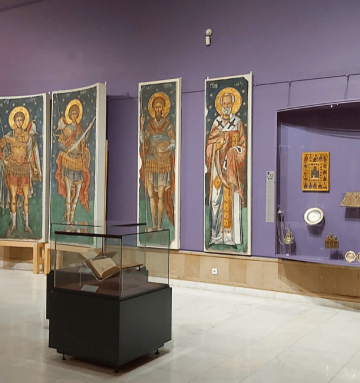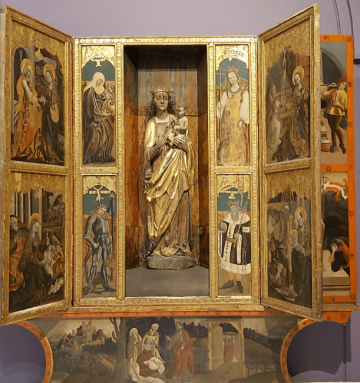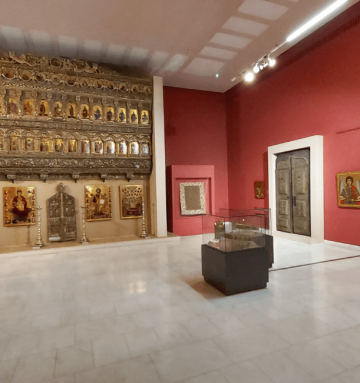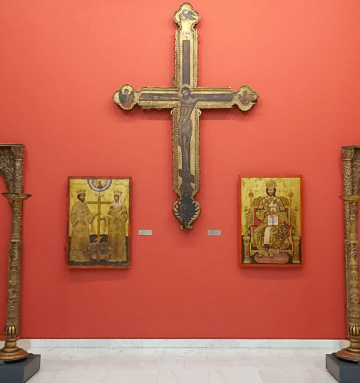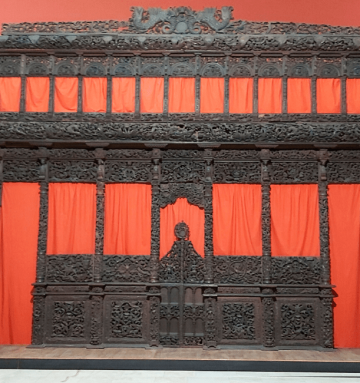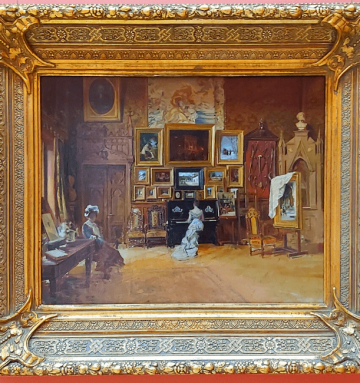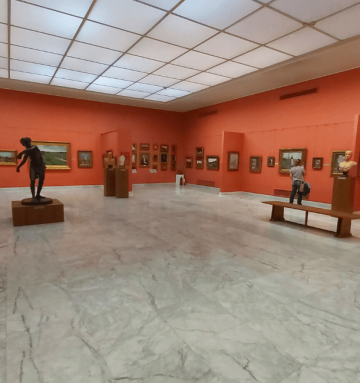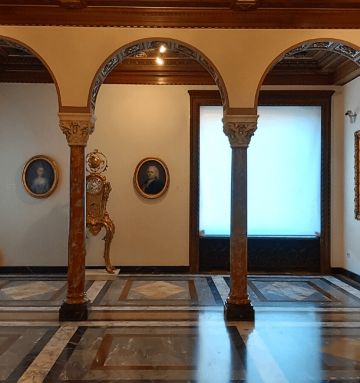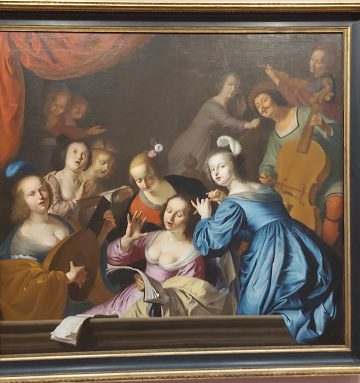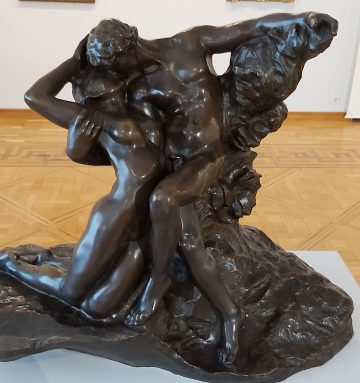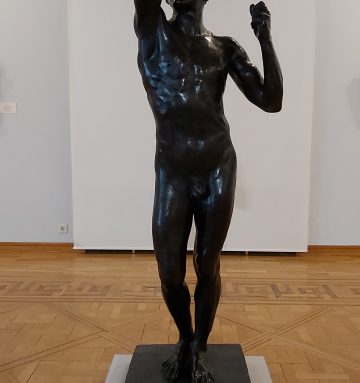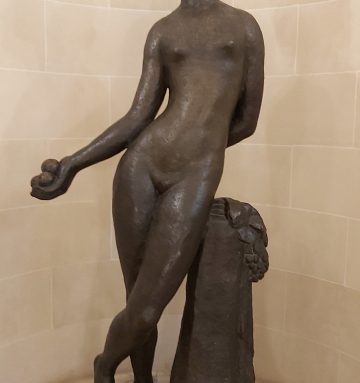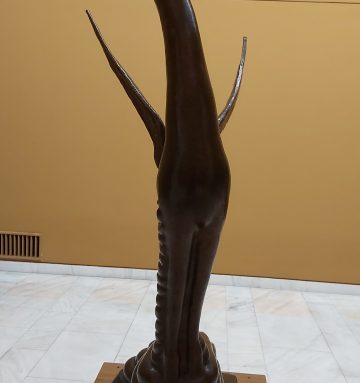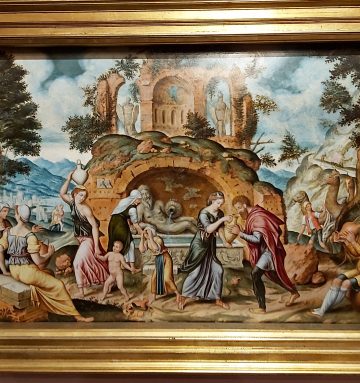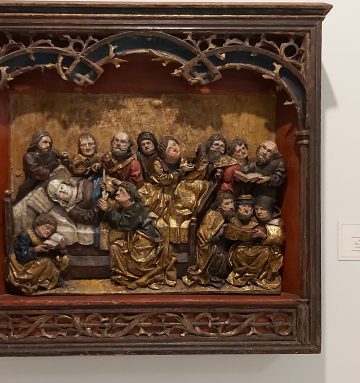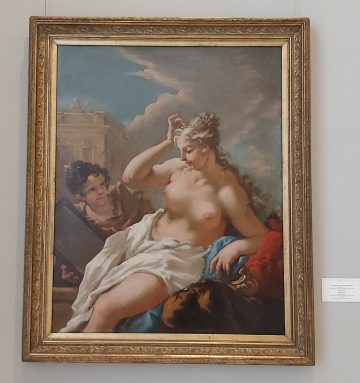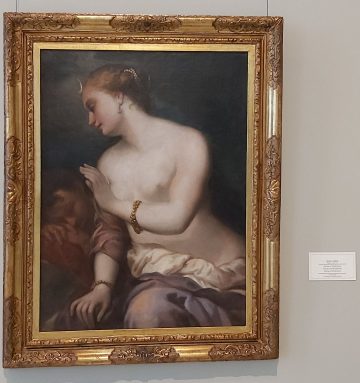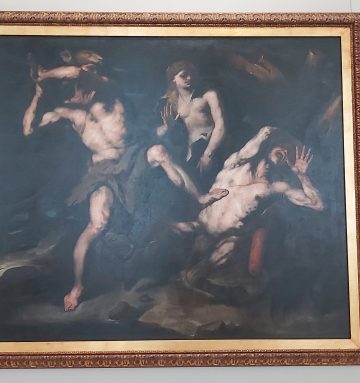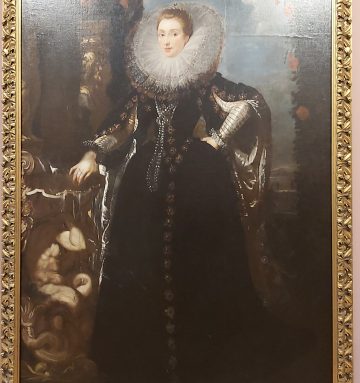The National Museum of Art of Romania showcases the most important and the most comprehensive collection of fine artworks in the country. The proximity to the Romanian Athenaeum enhances the tourist visibility of the museum. Through all it represents, the museum is definitely a must-see touristic objectives while in Bucharest.
With a collection of impressive works of art, divided into three major categories: Old Romanian Art Gallery, Modern Romanian Art Gallery and European Art Gallery, the National Art Museum of Romania represents one of the most pleasant and recreational ways to spend an afternoon in the Romanian Capital city. Among the most important artists who exhibited their works in this museum one can find Constantin Brancusi, Rembrandt, Monet, Rubens and Tintoretto.
Established in 1948 under the name of the Art Museum of the Romanian People's Republic, the museum has changed its official title several times and has moved from one wing to another, but still retaining its vocation as an important representative of the Romanian culture. Even though the permanent exhibition was closed for a decade (1990-2000) after the events of December 1989, the museum offered many temporary exhibitions to the public. Three permanent galleries were added, in 2013, to the historical spaces of the former Royal Palace (Throne Room, Stairs of Voievozilor, Royal Dining Room).
The permanent exhibition of the museum is a solid landmark for all those interested in Romanian culture. Usually, cultural circuits in Bucharest start with a visit to the Old Romanian Art Gallery and the Modern Romanian Art Gallery, both of which offer the broadest overview of the Romanian culture.
The European Art Gallery, the Romanian Medieval Art Gallery and the Romanian Modern Art Gallery bring together artworks exhibited in an attractive, modern manner, thus turning a visit to the National Museum of Art into an enjoyable and instructive way of spending time and having an enjoyable experience.
For history enthusiasts, the Throne Room and the other spaces of historical relevance give the visitor a glimpse of the past. At the same time, the temporary exhibitions offer incursions into the newly released artworks of Romanian or foreign artists.
Sculptures by the famous Constantin Brancusi, one of the pioneers of modernism, highlight the modern Romanian exhibition.
The three galleries hosting the permanent exhibitions represent a source of identity of the Romanian culture, being sought and appreciated by foreign and Romanian tourists. Also, all of them are part of the Bucharest Art Galleries, which enthrill art lovers in Romania's Capital.
The museum is increasingly trying to attract visitors to the fantastic palace, opening up the former royal living quarters and the throne room to guided tours on occasional weekends. You do not need to reserve a place on tour in advance, but you should buy tickets at least 15 minutes before each tour starts. There are three on each day, at 11.30, 14.00 and 16.30.
For story lovers, we have to say that the Royal Palace story starts at the beginning of the 19th century when Dinicu Golescu, a Wallachian Romanian man of letters, mostly noted for his travel writings and journalism, decided to build a house in this area. The house he built is the right wing of the Palace that you can see today. After his death, the house was bought by the State and transformed into Royal Chancellery. During that time, those who came to the country's throne used to have their palaces. This was not the case for Alexandru Ioan Cuza, the Prince of Moldavia, Prince of Wallachia, and later Ruler of the Romanian Principalities. He had no other property, so he used the former house of Dinicu Golescu as a living home and office.
On the 10th of May, King Carol entered the country on Calea Victoriei and stopped in front of the Palace. Here, a lot of people were waiting for him with flowers. They cheered, "Welcome home, Principe!". After Carol leaves the carriage, a close friend approaches him and whispers, "Principe, welcome home! This is your Palace!". Carol looked to the right and left, and took the Palace from where it is not! In his journal, he says: "I am living in a house which is a little smaller than the train station in my hometown". He realized that, sooner or later, his relatives would come to visit him. So, he started to build the Royal Palace. Before 1930 there were 3 parts of the Palace: the left one - was built due to King Carol I, the middle part - was built due to King Ferdinand, and the right part - was rebuilt due to King Carol II. After the fire in 1930, the Royal Palace was renovated. That's why we see today this unitary form of structure.
The history of the Royal Palace is closely related to the royal family, and Romanian people have boundless gratitude for King Carol I. This is why we want to tell you some interesting stories that you may like.
Carol I was an art lover. He read a lot; he disliked being in public debates, meetings or balls. More than this, he was German and had a problem with punctuality. If you met with the King and were late more than one minute, at the first opportunity, you received a watch as a gift.
Also, when you went to the King with a not-very-important problem, you were always standing and talking at the door. You could sit on a three-legged stool if the problem were still significant. The King had a comfortable seat, but your chair without a backrest and uncomfortable made you say quickly what you had to say and leave.
An event of rare beauty occurs during Prince Ferdinad's marriage to Princess Maria (later, Maria will become the most beloved queen of the Romanian people). King Carol and his wife, Elisabeta, decided to organize multiple weddings. On this occasion, couples from each county of country were selected and brought to Bucharest. Everyone was dressed in folk costumes. The marriage ceremony took place at the same time as that of the royal couple and the party took place at the Royal Palace.
These are just a few stories that show us a part of the history of the Romanian people, the history of the people who influenced the development of an entire nation. You can find out more spicy stories and not only during the guided tour in the Historical spaces of the Palace.
Enjoy your visit!
- National Gallery (Medieval Romanian Art + Treasure Rooms + Romanian Modern Art): 15 lei ~ 3 euro;
- European Art Gallery: 15 lei ~ 3 euro;
- Art Collections Museum: 15 lei ~ 3 euro;
- K.H. Zambaccian Museum: 10 lei ~ 2 euro;
- Theodor Pallady Museum: 10 lei ~ 2 euro;
- Combo ticket European Art and National Gallery: 25 lei ~ 5 euro;
- Combo ticket National Museum of Art of Romania and Art Collections Museum: 30 lei ~ 6 euro;
- Combo ticket National Museum of Art of Romania, Art Collections Museum, K.H. Zambaccian Museum and Th. Pallady Museum (available 7 days after purchase): 50 lei ~ 10 euro;
- Exhibitions: 4 to 10 lei ~ 1 euro or 2 euro depending on exhibition;
- Historical spaces (Royal Dining Room, Throne Hall, Voïevods Staircase): 20 lei ~ 4 euro
- First Wednesday of the month
- Official and cultural delegations
- Romanian museum employees, employees of the Romanian Ministry of Culture and its subordinate offices
- ICOM cardholders (cards valid for the current year)
- Children under 7
- Children up to 18 years old with special needs, disabilities, who benefit from social protection
- Pupils up to 18 years old during holidays
- Romanian pupils and students on state scholarships abroad
- Euro 26 cardholders on the 26th day of each month
- People with disabilities and their companions
- Visual art students

